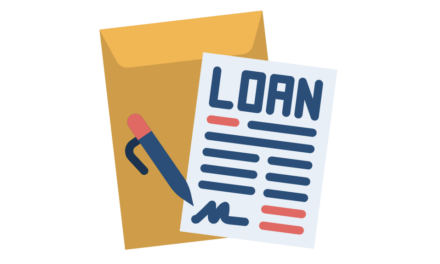Navigating the world of small business financing can be daunting for entrepreneurs and small business owners. Whether you’re aiming to launch a new venture, expand an existing one, or manage cash flow, understanding the terms of small business loans is crucial. This guide will delve into various types of small business loans, their associated terminology, and the essential factors to consider before applying for financing.
Why Small Business Loans Matter
Small business loans can provide the necessary funding to help your business thrive. Here are some key reasons why entrepreneurs might choose to pursue a loan:
1. Launching a Business
Starting a new venture often requires substantial upfront capital. Small business loans can provide the necessary funds to cover initial costs such as inventory, equipment, and marketing.
2. Expanding an Existing Business
For businesses looking to grow, loans can finance new initiatives, whether launching a new product, entering a new market, or hiring additional staff.
3. Purchasing Equipment
Businesses that rely on machinery or specialized equipment may need to secure financing to purchase or replace assets without straining cash reserves.
4. Covering Cash Flow Gaps
Seasonal fluctuations can create cash flow challenges. Small business loans can help bridge these gaps, ensuring operational costs are met even during slower periods.
5. Improving Working Capital
Unexpected opportunities or setbacks may arise, and having access to quick funding can help seize advantageous situations without jeopardizing operational stability.
Common Types of Small Business Loans
Understanding the various types of small business loans is essential for making informed decisions. Here are some of the most common loan options available:
1. Term Loans
Term loans are among the most popular options for small businesses. They provide a lump sum that must be repaid over a specified period, typically ranging from a few months to several years.
- Repayment Terms: Loans can be categorized as short-term (3 to 24 months), mid-term (up to 5 years), or long-term (up to 10 years).
- Loan Amounts: Borrowers can access anywhere from $5,000 to over $1 million, with interest rates ranging from 6% to 36%.
- Eligibility Requirements: While criteria vary by lender, common requirements include a minimum credit score of 600, a monthly revenue of at least $8,000, and a business history of at least six months.
2. SBA Loans
The Small Business Administration (SBA) offers various loan programs to assist small businesses. SBA loans are known for their favorable terms and lower interest rates.
- Loan Types: Common programs include the 7(a) loan for general business purposes and the CDC/504 loan for real estate and equipment.
- Loan Amounts: SBA loans can range to $5 million, with repayment terms extending to 25 years.
- Interest Rates: Typically lower than conventional loans, 7 (a) loans have rates that can vary from the base rate plus 2.25% to 4.7%.
- Eligibility Requirements: Businesses must operate in the U.S., demonstrate owner equity, and have exhausted other funding options. A credit score of 640 or higher is generally preferred.
3. Traditional Bank Loans
Banks and credit unions offer these loans, typically used for business expansion or purchasing assets.
- Repayment Terms: Loan terms usually last between 3 and 10 years.
- Loan Amounts: Borrowers can secure between $250,000 and $1 million, with interest rates ranging from 3% to 22%.
- Eligibility Requirements: A minimum credit score of 640, along with established revenue and business tenure, is often necessary.
4. Business Lines of Credit
A business line of credit offers flexibility, allowing businesses to withdraw funds up to a pre-approved limit as needed.
- Usage: This type of financing functions like a credit card, making it ideal for handling unexpected expenses or seasonal cash flow needs.
- Repayment Terms: Terms usually range from 6 months to 5 years, with interest rates varying between 10% and 99%.
- Eligibility Requirements: Lenders may require a credit score of at least 680 and minimum monthly revenue between $10,000 and $250,000.
5. Microloans
Microloans are small loans designed for startups and small businesses needing modest capital.
- Loan Amounts: Typically, microloans can be up to $50,000.
- Repayment Terms: They often feature flexible repayment terms, usually spanning up to 6 years.
- Interest Rates: Rates are generally between 6% and 9%.
- Eligibility Requirements: Borrowers must meet SBA eligibility standards and any specific criteria the lender sets.
6. Invoice Factoring
Invoice factoring allows businesses to borrow against unpaid invoices, providing immediate cash flow.
- Functionality: This option is ideal for companies with outstanding invoices, enabling them to access funds quickly.
- Loan Terms: Repayment typically occurs within one to three months.
- Fees: Lenders charge processing fees (around 3%) and factoring fees (1% to 2% of the invoice).
- Eligibility Requirements: Lenders evaluate financial records and the creditworthiness of customers rather than the business itself.
Key Terms to Understand
When exploring small business loans, familiarize yourself with common terminology to help you navigate the application and repayment process.
1. Interest Rate
The interest rate is the cost of borrowing money expressed as a percentage of the loan amount. Understanding how rates are calculated—fixed or variable—is crucial for budgeting repayment costs.
2. Annual Percentage Rate (APR)
The APR includes the interest rate and any additional fees associated with the loan, providing a more comprehensive view of the loan’s overall cost.
3. Loan Maturity Date
This date marks the end of the loan term, at which point the borrower must have paid off the full loan amount, including any interest and fees.
4. Prepayment Penalty
Some lenders impose fees for paying off loans early, intending to recover lost interest income. It’s vital to review loan agreements for such terms.
5. Collateral
Collateral refers to assets pledged by the borrower to secure the loan. If the borrower defaults, the lender can seize the collateral to recover losses.
6. Default
Default occurs when a borrower fails to meet the repayment terms agreed upon in the loan contract, which can result in serious financial repercussions and damage to credit scores.
7. Debt-to-Income Ratio
This ratio measures borrowers’ monthly debt payments against their gross monthly income, helping lenders assess repayment capacity.
8. Loan Terms
Loan terms include all conditions associated with the loan, such as repayment duration, interest rates, fees, and any stipulations related to collateral or guarantees.
Factors to Consider Before Applying
Before applying for a small business loan, consider the following factors to ensure you choose the best option for your needs:
1. Determine Your Funding Needs
Assess how much funding you truly need and how it will be used. This clarity will help you select the right loan type and amount.
2. Evaluate Your Financial Health
Examine your business’s credit score, revenue, and overall financial standing. This evaluation will help you determine which lenders you might qualify for.
3. Research Lenders
Not all lenders are created equal. Compare interest rates, repayment terms, fees, and customer service across different institutions to find the best fit for your business.
4. Understand Your Loan Options
Different types of loans serve different purposes. Ensure you understand the specific loan type you’re applying for and how it aligns with your business goals.
5. Review Loan Agreements Thoroughly
Read and understand all loan terms and conditions before signing. Pay close attention to any fees, penalties, and the repayment schedule.
6. Prepare Required Documentation
Lenders typically require various documents during the application process, such as financial statements, tax returns, and a business plan. Prepare these in advance to streamline your application.
Conclusion
Understanding the terms and conditions associated with small business loans is essential for making informed financing decisions. With the right knowledge, entrepreneurs can navigate the lending landscape effectively, ensuring that they secure the best options for their business needs. By comprehensively assessing funding requirements, researching potential lenders, and understanding the intricacies of loan terms, small business owners can set themselves up for financial success.
With various loan options available, it’s essential to approach the lending process carefully. Always take the time to understand your options and seek professional advice if necessary, as this will help protect your business and enhance its potential for growth.










